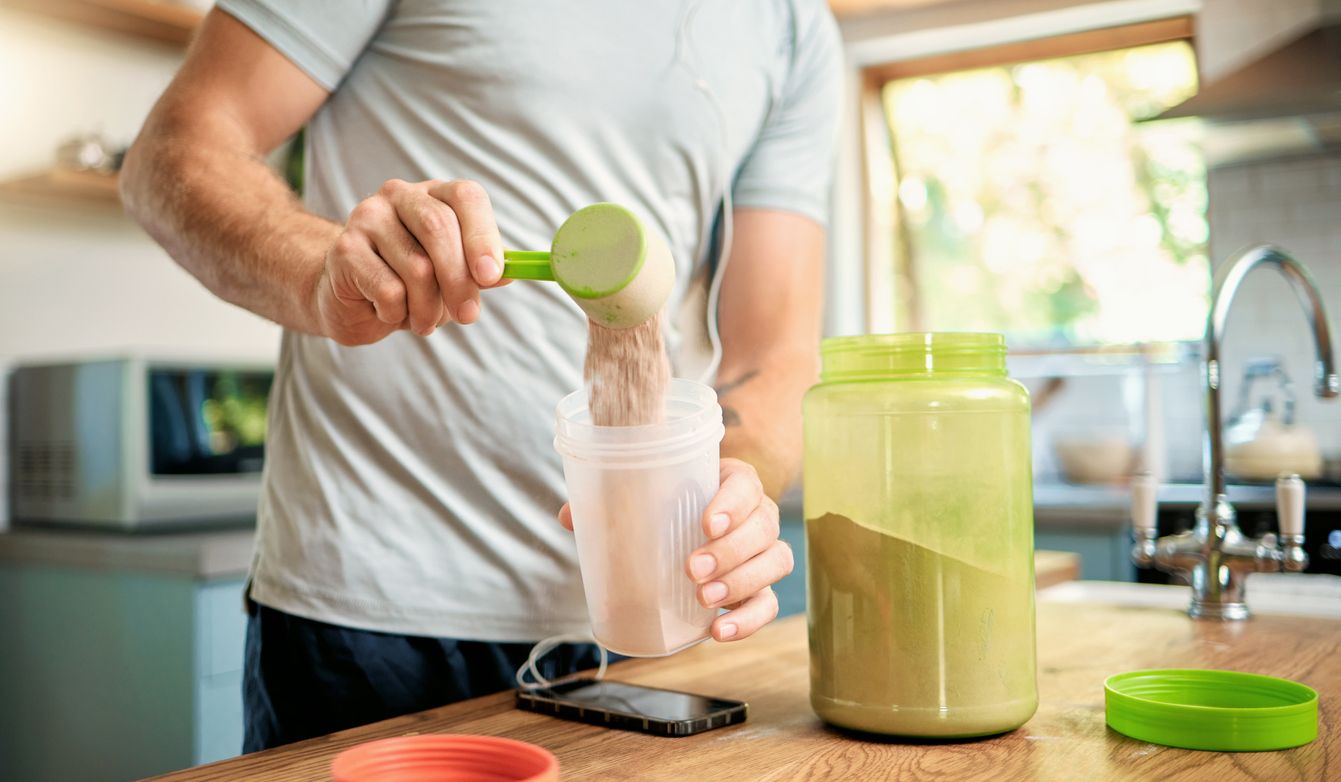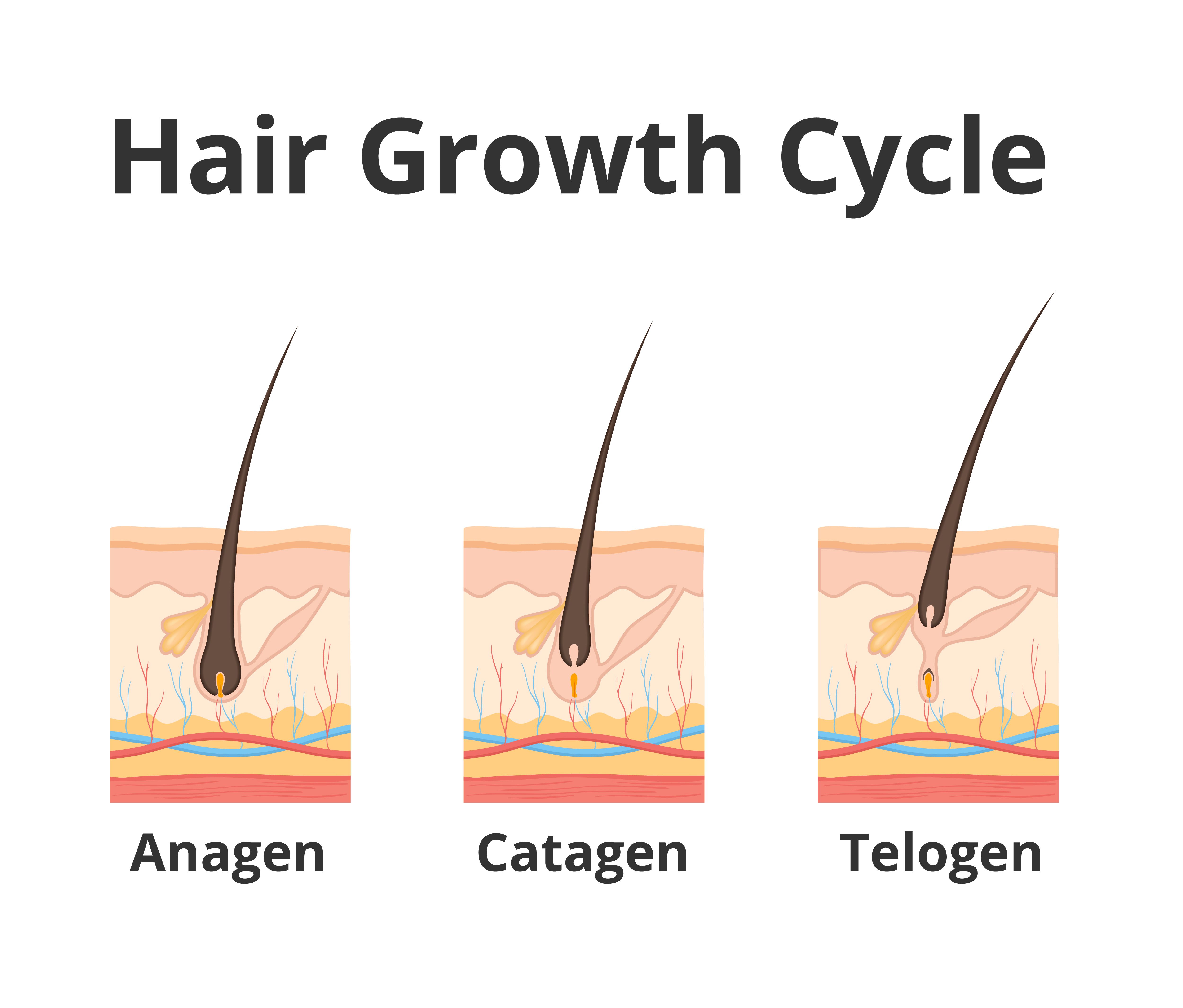- Home
- Trend
- Weight Loss Strategies
- Acne Tips
- Hair Health Information
- Blemish Removal Tips
- Acne Scar Removal Tips
- Muscle Building Techniques
- Intimate Care Tips
- Postpartum Intimate Care
- Eye Bags Wiki
- Tips for Face Slimming
- Secret of Permanent Hair Removal
- Breast Enlargement Tips
- Cure to Snoring
- Marionette Lines
- Skin-Tightening Secrets
The growing trend in taking meal replacement diets for nutrition is especially appealing to those with tight schedules, as it provides a quick and easy alternative to traditional meals while still delivering essential nutrients. Meal replacement diets can be an effective strategy for losing weight, but with so many options out there, it can be difficult to know which one is right for you.
What is a Meal Replacement Diet?

A meal replacement diet typically involves substituting one or two meals per day with a meal replacement product, such as a meal replacement shake, bar, or soup. These products are formulated to provide balanced nutrition, offering a combination of essential vitamins, minerals, proteins, fats, and carbohydrates in a convenient, pre-measured format.
The goal of these diets is to promote weight loss by helping you control portion sizes and reduce your overall calorie intake, while ensuring that your body gets the nutrients it needs.
How Meal Replacement Diets Promote Weight Loss?

The reason meal replacement diets are so effective for weight loss is that they help control portion sizes and reduce your overall calorie intake. By swapping one or two meals with a nutrient-dense shake or bar, you can create a calorie deficit without feeling deprived or sacrificing essential nutrients. Here are the key benefits of meal replacement diets:
Portion Control
Since meal replacements come in pre-measured portions, you won’t have to worry about overeating. This is especially important when trying to create a calorie deficit to lose body weight.
Balanced Nutrition
Despite being lower in calories than traditional meals, meal replacements are designed to provide all the essential nutrients your body needs, including protein, fibre, and healthy fats. This ensures that you stay full and satisfied throughout the day, reducing the temptation to snack on unhealthy foods.
Convenience
One of the biggest benefits of meal replacements is their convenience. They’re quick and easy to prepare, making them ideal for people with busy schedules. This eliminates the need for meal prep and helps prevent unhealthy eating habits, such as grabbing fast food on the go.
免費體驗
S6 Body Sculpting Treatment
1 Minute Self-Registration
Date should not be before minimal date
Top 10 Types of Meal Replacements
When considering a meal replacement diet, selecting the right products can significantly impact your weight loss journey. Meal replacements offer convenience and can help you stick to a balanced diet when time is tight or when aiming for specific calorie deficits. Let’s explore the top 10 types of meal replacements, focusing on their nutritional profiles and effectiveness in supporting healthy weight management.
1. Meal Replacement Shakes
Meal replacement shakes are popular for their convenience and balanced nutrition. They often contain a mix of proteins, carbohydrates, healthy fats, and essential vitamins and minerals.
Look for shakes that are high in protein, have a good balance of healthy fats and carbohydrates, and include a broad spectrum of nutrients.
Benefits: These shakes are often used to lose weight by providing a controlled number of calories and helping to manage hunger. They are especially useful for those with busy schedules who need a quick meal without compromising nutritional value.
2. Meal Replacement Bars
Meal replacement bars are compact and portable, making them an excellent option for on-the-go meals. They come in various flavours and often include a balance of protein, carbs, and fats.
Choose bars with a high protein content and minimal added sugars. Ideally, they should also contain fibre to help with satiety.
Benefits: They provide a quick and easy meal solution that can support weight loss by controlling calorie intake and providing essential nutrients in a convenient form.
3. Ready-to-Drink Meal Replacement Beverages
Ready-to-drink beverages offer a hassle-free meal replacement option. These drinks are pre-packaged and ready to consume, which eliminates the need for preparation.
Look for beverages that are low in sugar, rich in protein, and fortified with vitamins and minerals.
Benefits: They offer convenience and can be particularly useful when you need a meal replacement while travelling or during a busy day.
4. Meal Replacement Soups
Meal replacement soups are a warming and satisfying option. They typically contain a blend of vegetables, protein sources, and sometimes whole grains.
Opt for soups that have a low sodium content and are rich in vegetables and protein.
Benefits: These soups can be filling and provide a comforting way to manage calorie intake while ensuring a good intake of nutrients.
5. Meal Replacement Powders
Meal replacement powders are versatile and can be mixed with water, milk, or added to smoothies. They come in various flavours and formulations.
Select powders that offer a balanced mix of protein, carbohydrates, and healthy fats, and are free from excessive sugars and additives.
Benefits: Powders offer flexibility in how they are used and can be tailored to fit into different meal plans. They are particularly useful for creating customised shakes or smoothies.
6. Protein-Enhanced Meal Replacements
These products focus on providing a high protein content to help with muscle maintenance and satiety. They can come in the form of shakes, bars, or powders.
Look for products that use high-quality protein sources and include minimal sugars.
Benefits: High protein content helps in fat loss by increasing muscle mass and reducing hunger, making it easier to maintain a calorie deficit.
7. Plant-Based Meal Replacements
Plant-based meal replacements are ideal for those following a vegetarian or vegan diet. They typically use ingredients like pea protein, rice protein, and various plant-based nutrients.
Ensure these products are well-rounded with adequate protein, fibre, and essential vitamins and minerals.
Benefits: They support weight management while adhering to plant-based dietary preferences and can be easier on digestion.
8. High-Fibre Meal Replacements
High-fibre meal replacements include additional fibre to help with satiety and digestive health. They are beneficial for maintaining regular bowel movements and managing hunger.
Look for products with added fibre from sources like oat bran, psyllium husk, or chia seeds.
Benefits: Increased fibre intake can help control appetite and support a balanced diet, contributing to effective weight loss.
9. Low-Carb Meal Replacements
Low-carb meal replacements are designed for those on ketogenic or low-carb diets. They offer a lower carbohydrate content while maintaining a balanced nutritional profile.
These products should be low in carbohydrates but high in protein and healthy fats.
Benefits: They assist in losing weight by promoting ketosis or simply reducing overall carbohydrate intake, which can lead to fat loss.
10. Customised Meal Replacements
Some companies offer customised meal replacement plans, allowing you to select products based on your specific nutritional needs and goals.
These products can be tailored to include the right balance of protein, fats, and carbs according to individual health needs.
Benefits: Customised options can optimise your diet plan to better support weight loss goals and overall health.
How to Choose the Right Meal Replacement?
When selecting a meal replacement, consider the following:
1. Nutritional Balance
When selecting a meal replacement, ensure it provides a balanced mix of essential nutrients:
• Protein: Aim for options with 15-20 grams of protein per serving. Good sources include whey, soy, or pea protein.
• Carbohydrates: Opt for products with complex carbohydrates like oats or whole grains, avoiding those with high amounts of refined sugars.
• Healthy Fats: Look for meal replacements that include healthy fats from sources such as flaxseed, chia seeds, or avocado oil.
Practical Tip: Check local supermarkets and health food stores for meal replacement shakes that offer clear nutritional information. Ensure the product lists are transparent and highlight key nutrients.
2. Ingredients
Choose meal replacements that feature whole, natural ingredients and avoid excessive sugars and artificial additives:
• Whole Foods: Select products with ingredients like fruits, vegetables, and nuts.
• Avoid Additives: Stay clear of those with high fructose corn syrup, artificial colours, and flavours.
Practical Tip: Visit health food sections in supermarkets or specialty health stores for products with clean, straightforward ingredient lists. Many stores carry options that emphasise natural ingredients.
3. Personal Preferences
Pick meal replacements that align with your dietary needs and preferences:
• Plant-Based: For those following a vegan or vegetarian diet, look for products containing plant-based proteins like pea or brown rice protein.
• Gluten-Free: For individuals with gluten sensitivities, ensure the product is labelled gluten-free.
Practical Tip: Explore health food stores or sections in supermarkets that cater to diverse dietary needs. Look for products labelled according to your specific preferences, such as plant-based or gluten-free.
4. Purpose
Choose a meal replacement that aligns with your specific health and fitness goals:
• Weight Loss: Opt for options with lower calories and higher protein content to help you feel fuller longer.
• Muscle Gain: Look for higher protein content and added ingredients that support muscle development, like amino acids.
• Nutrient Replenishment: Select products fortified with essential vitamins and minerals to help meet your daily nutritional needs.
Practical Tip: Many fitness-focused stores offer products tailored to specific needs.
The Role of S6 Body Sculpting Treatment in Weight Loss
While meal replacement diets can be highly effective for losing weight, some areas of the body, such as the arms, thighs, or belly, may still retain stubbornness that is resistant to diet and exercise. This is where the S6 Body Sculpting Treatment can make a significant difference.
The S6 Body Sculpting Treatment is a cutting-edge, non-invasive procedure that uses advanced bio-laser and vacuum suction technologies to target and break down fat cells. The treatment works by:
1. Stimulating Fat Breakdown
The bio-laser technology used in the S6 treatment penetrates deep into the skin, targeting fat cells and breaking them down. This helps reduce the appearance of stubborn fat in areas like the thighs and abdomen.
2. Improving Body Contours
By targeting specific areas, the S6 treatment helps sculpt and contour your body, creating a more balanced and toned appearance. This makes it an excellent complement to a meal replacement diet.
3. Safe and Non-Invasive
Unlike surgical fat removal procedures, the S6 treatment is non-invasive and requires no downtime. It’s a safe and effective way to reduce body fat without the risks associated with surgery.
4. Boosting Weight Loss Results
Combining a meal replacement diet with S6 Body Sculpting can help accelerate your results, allowing you to achieve a more toned and sculpted body in less time.
免費體驗
S6 Body Sculpting Treatment
1 Minute Self-Registration
Date should not be before minimal date
Long-Term Benefits of Combining S6 Body Sculpting Treatment and Meal Replacement Diets
While meal replacements are often employed as a short-term solution for weight loss, their integration into a broader, sustainable approach can offer significant long-term benefits. Coupling meal replacements with advanced treatments like the S6 Body Sculpting Treatment can enhance your journey towards achieving and maintaining your weight and health goals. Here’s how this powerful combination can benefit you:
Maintain a Healthy Weight
Once you've achieved your weight loss goals with the aid of meal replacements, incorporating S6 Body Sculpting can further help in maintaining a healthy weight. The S6 Body Sculpting Treatment uses advanced bio-lasers and vacuum suction technology to target stubborn fat areas that are resistant to diet and exercise.
Develop Healthier Eating Habits
Meal replacements can facilitate the development of better eating habits by helping you control portion sizes and reducing your intake of processed foods. Meanwhile, combining this with the S6 Body Sculpting Treatment encourages a balanced approach to weight management.
As you follow a meal replacement diet, you’ll likely start to recognize the benefits of whole foods and healthier choices, which will complement the body sculpting process.
Support Overall Health
Many meal replacement products are fortified with essential vitamins and minerals, making them a practical solution for meeting daily nutritional needs. The S6 Body Sculpting Treatment, while primarily focused on fat reduction, also promotes skin tightening and improves the appearance of your body’s silhouette.
By ensuring your meal replacements provide key nutrients like vitamin C, calcium, and protein, and combining this with the body-sculpting benefits of the S6 treatment, you can support both your nutritional and aesthetic health.
Enhance Body Composition
Combining S6 Body Sculpting with a meal replacement diet can significantly enhance your body composition. Meal replacements help regulate calorie intake and ensure balanced nutrition, while the S6 treatment helps reduce localised fat deposits and improve muscle tone.
This synergy not only helps in achieving a leaner physique but also supports the development of muscle mass and the reduction of body fat, leading to a more defined and sculpted body shape.
Improve Long-Term Weight Management
The integration of meal replacements and S6 Body Sculpting Treatment creates a robust framework for long-term weight management.
Meal replacements simplify calorie control and nutrient intake, while the S6 treatment provides targeted fat reduction and body contouring. This combination helps you establish and maintain a healthy weight by addressing both dietary habits and body composition.
Achieving Success with Meal Replacement Diets
Incorporating a meal replacement diet into your weight loss journey can be a powerful tool for achieving and maintaining a healthy weight. By choosing nutrient-dense shakes, bars, or other meal replacements, you can reduce your calorie intake while still providing your body with the essential nutrients it needs to thrive.
When combined with treatments like the S6 Body Sculpting Treatment, which targets stubborn fat, you can accelerate your weight loss and enjoy the benefits of a more sculpted and toned physique.
S6 Body Sculpting Treatment免費體驗
S6 Body Sculpting Treatment
1 Minute Self-Registration
Date should not be before minimal date
FAQ

1. How does a 7-day weight loss meal plan help achieve weight loss?
A well-structured 7-day weight loss meal plan can significantly aid in achieving weight loss by promoting healthy eating and creating a calorie deficit. By incorporating healthy recipes and focusing on a balanced diet, the plan helps manage body weight effectively. Meals often include high protein sources, such as lean meats or legumes, and low-fat options to support muscle maintenance while reducing fat. Additionally, incorporating foods like sweet potatoes, 1 cup steamed vegetables, and 1 cup cooked brown rice can help keep you full and satisfied.
2. What role do low-fat and high-protein foods play in a weight loss plan?
In a weight loss plan, low-fat and high-protein foods are crucial for managing body weight and promoting fat loss. High-protein foods, such as lean meats, fish, and legumes, help build and repair muscle, which can boost metabolism and increase calorie burn. Low-fat options reduce calorie intake without sacrificing essential nutrients. For instance, including 1 cup cooked brown rice or 1 cup steamed vegetables provides essential nutrients without excess calories.
3. How can you save money while following a 7-day weight loss meal plan?
You can save money on a 7-day weight loss meal plan by planning meals around cost-effective ingredients and avoiding expensive or processed foods. For instance, incorporating staple foods like 1 cup cooked brown rice, sweet potatoes, and seasonal fruits such as 1 cup blueberries can be budget-friendly. Preparing meals in bulk and using ingredients across multiple recipes can also reduce costs.
4. How does avoiding sugary drinks contribute to weight loss?
Answer: Avoiding sugary drinks is a key strategy in a weight loss plan as these beverages are often high in added sugar and calories without providing essential nutrients. Consuming fewer sugary drinks helps reduce overall calorie intake and prevents spikes in blood sugar levels, which can lead to increased fat storage. Instead, opting for water, herbal teas, or drinks without added sugar supports hydration and aligns with a balanced diet.
5. Why is it important to include a variety of foods, such as sliced banana and cup plain yoghurt, in a weight loss meal plan?
Including a variety of foods like sliced banana and cup plain yoghurt in your weight loss meal plan ensures you receive a broad range of essential nutrients and prevent dietary monotony. Sliced banana provides natural sweetness and potassium, while cup plain yoghurt offers protein and probiotics. Variety also helps maintain adherence to the plan by keeping meals interesting and satisfying.








